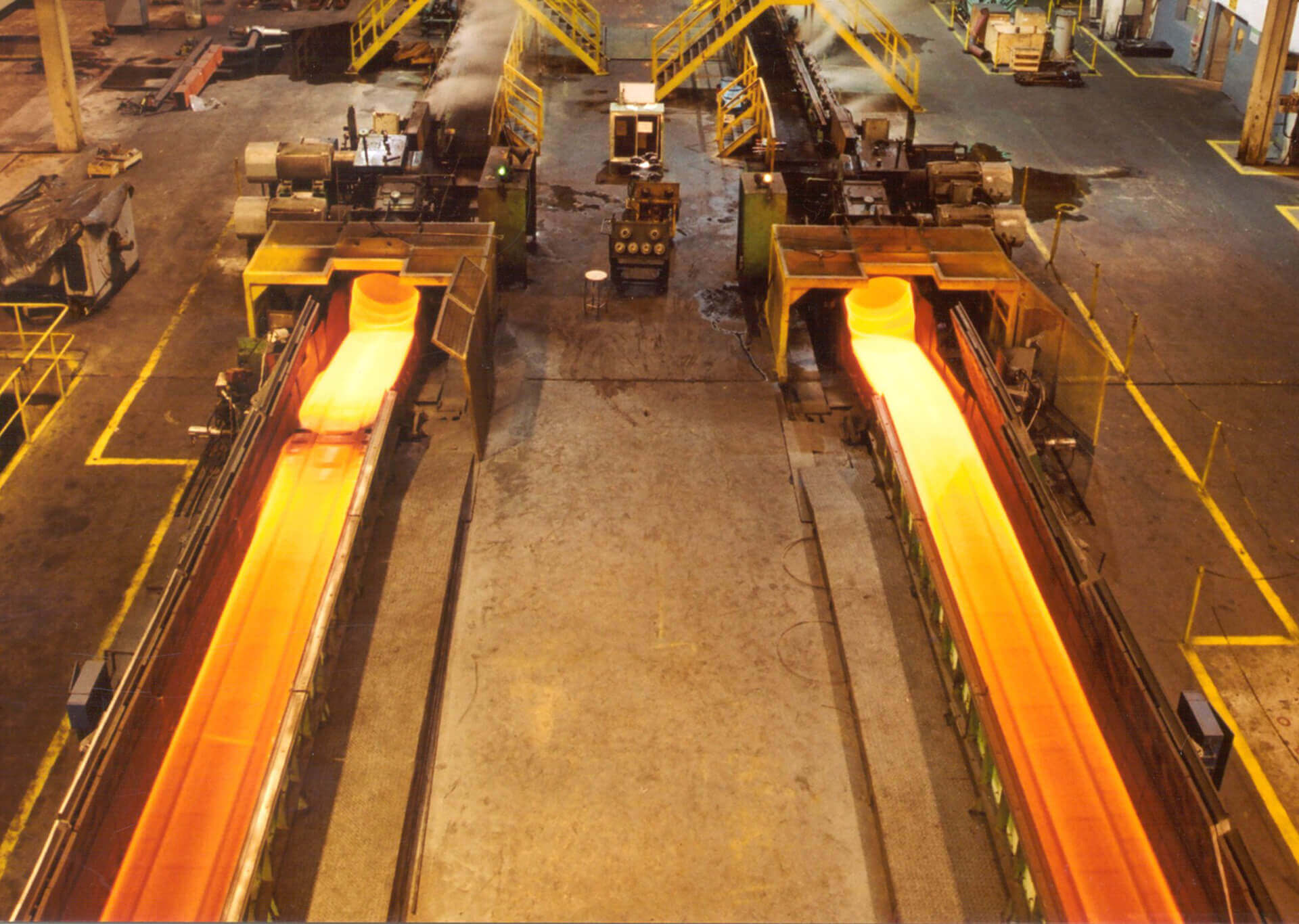
Steel process
Learn here about the steelmaking process and understand the differences between the types of steel mills


Learn here about the steelmaking process and understand the differences between the types of steel mills

The boundary between iron and steel was defined in the Industrial Revolution, with the invention of furnaces that not only corrected iron impurities, but also added properties such as wear, impact, corrosion resistance, etc. Because of these properties and their low cost, steel now accounts for about 90% of all metals consumed by industrial civilization.
Steel is an iron and carbon alloy. Most steel mills use iron oxide, mixed with fine sand, and coal or charcoal. Coal plays a dual role in steel making: as a fuel or as a reducer.
There are three stages in the process: reduction, refining and lamination. The evolution of technology is ensuring faster production speeds and decreasing the average spent on these processes.
The mills are classified according to their production processes:
Integrated
That operate the three basic phases (reduction, refining and lamination); participate in the entire production process and produce steel.
Semi-integrated
Which operates two phases: refining and lamination. These plants start from pig iron, sponge iron or scrap metal purchased from third parties to turn them into steel in electric steel mills and their subsequent rolling. In addition, depending on the products they produce in their production lines, the plants can also be classified as follows:
| Semi Finished | Plates, blocks and billets |
|---|---|
| Carbon steel plans | Sheets and coils |
| Special steel / alloyed plans | Sheets and coils |
| Long carbon steels | Bars, Profiles, Wire Rods, Rebar, Wire & Tube Seamless |
| Long special / alloy steels | Bars, wire rod, wire and seamless tubes |
Not integrated
They operate only one phase of the process: processing (rolling or drawing) or reduction.
Lamination
This is where the re-rollers, plate and billet usually, are purchased from semi-integrated or integrated mills and re-align those with scrap material.
Wire drawing
The drawing plants are units that have only drawn products, where producers of wires and bars using wire rod as raw material.
Reduction
It is in the reduction phase that the production of pig iron occurs, where it is common to use charcoal in blast furnaces to reduce ore. These are companies are called “pig iron”, that produce pig iron but not steel. The Brazilian steel industry is where steel is manufactured in the form of semi-finished, rolled, re-rolled, drawn and seamless tubes, in a specific group in the metallurgy division.
Steelmaking can be divided into an initial preparation and four steps: load preparation, reduction, refining and rolling. As you can see in the flow below:
Much of the iron ore (fines) is agglomerated using lime and coke fines.
The resulting product is called sinter.
The coal is processed in the coke oven and becomes coke.
These raw materials, now prepared, are loaded in the blast furnace.
Oxygen heated to a temperature of 1000ºC is blown from under the blast furnace.
Coal, in contact with oxygen, produces heat that melts the metal charge and begins the process of reducing iron ore into a liquid metal: pig iron.
Pig iron is a carbon and iron alloy with a very high carbon content.
Oxygen or electric steel mills are used to transform liquid or solid pig iron and scrap steel and iron into liquid steel.
At this stage part of the carbon contained in the pig iron is removed along with impurities.
Most liquid steel is solidified in continuous casting equipment to produce semi-finished products, ingots and blocks.
Semi-finished products, ingots and blocks are processed by equipment called rolling mills and transformed into a wide variety of steel products, whose nomenclature depends on their shape and / or chemical composition.
The steel cycle is the cycle of life. Steel is in human relationships, consumer dreams, hope for healing, the intimacy of homes, and the ideals of ...
Represented by 15 private companies, controlled by eleven business groups and operating 31 mills spread across 10 Brazilian states, the Brazilian s...
There are a very large number of shapes and types of steel products. The wide variety of steel available in the market is due to the fact that each...
Steel is present in our daily lives on many occasions and therefore often becomes invisible.
Steel is among the most recyclable materials in the world. The industry encourages the collection and recycling of steel contained in products at e...